Did you know that nearly one in six children faces sensory processing challenges that impact how they move, participate, and thrive—both in daily life and during exercise? This surprising statistic puts a spotlight on the growing importance of sensory-friendly workouts . If you or a loved one has ever felt overwhelmed by loud gyms, bright lights, or chaotic routines, this guide will show you how fitness and comfort can go hand-in-hand, transforming both body and mind.
Why Sensory-Friendly Workouts Are Transforming Fitness: Surprising Facts and Research
"According to recent research, nearly 1 in 6 children experience sensory processing challenges—making sensory-friendly workouts not just beneficial, but essential."
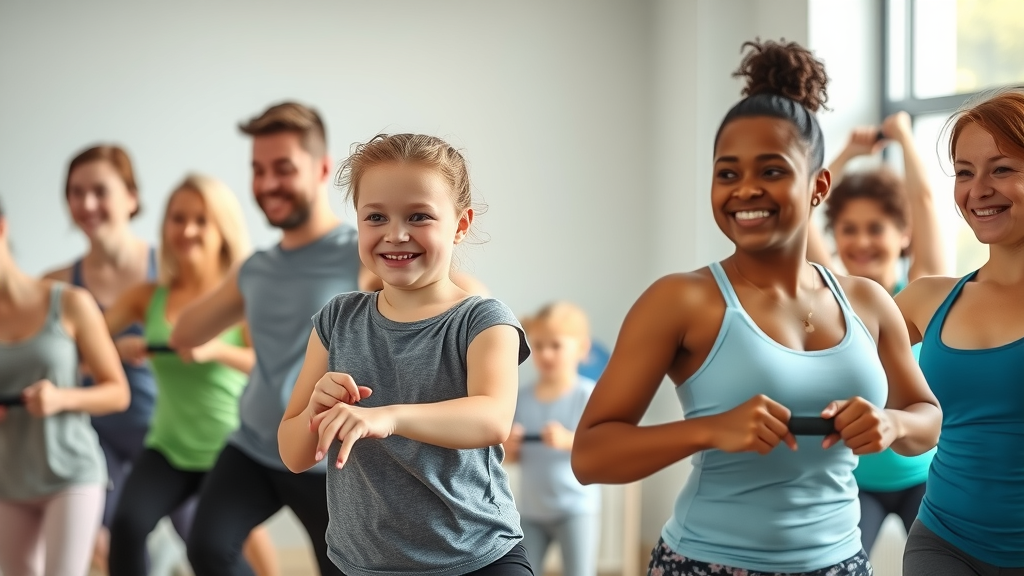
- Improved motor skills
- Reduced anxiety
- Enhanced sensory integration
- Greater participation by individuals with autism and other sensory processing differences
The shift towards sensory-friendly workouts is not just a trend—it's a revolution rooted in the needs of a diverse range of participants. Whether you’re seeking better motor skill development, emotional regulation, or simply a place where fitness feels safe and supportive, sensory-friendly routines deliver measurable benefits. Recent research highlights that adapting fitness spaces positively influences those with autism spectrum disorders, ADHD, and others with sensory processing challenges, improving mood, social skills, and overall participation rates.
For individuals struggling with sensory processing issues , traditional exercise environments can make it hard to join in, often due to excess noise, harsh lighting, and non-adaptive equipment. By redesigning these environments and routines to support comfort and individual needs, we can bridge gaps and enable everyone—from children with autism to adults with varied sensory needs—to unlock the physical, emotional, and social rewards of active lifestyles.
Defining Sensory-Friendly Workouts and Their Importance for Sensory Integration
Sensory-friendly workouts are designed to minimize overwhelming stimuli while maximizing comfort, enjoyment, and achievement. They emphasize the type of body awareness and sensory integration necessary for effective participation, particularly in individuals who may struggle with traditional fitness models. By carefully considering noise, lighting, tactile cues, and adaptive equipment, these workouts create an experience where everyone feels welcomed and empowered.
Importantly, these approaches nurture both mind and body , integrating physical activity with positive, calming sensory input. Elements like deep pressure , resistance, and movement sequences are harnessed to regulate the nervous system and provide pathways for learning new motor skills , managing anxiety, and building self-confidence. For children with autism or anyone with sensory processing challenges , this adaptability ensures routines are enjoyed consistently and progress is celebrated.
What Makes Workouts Sensory-Friendly?
A workout is considered sensory-friendly when the environment, equipment, and exercises are actively designed to reduce overwhelming sensations and cater to the unique needs of individuals with sensory differences. This can include soft, adjustable lighting , predictable routines, accessible sensory bin stations, and the use of versatile tools like weighted balls or textured mats. The goal is an atmosphere where both children and adults can focus on movement and achievement without sensory overload.
Incorporating adaptive strategies such as visual schedules or noise-canceling headphones can further enhance accessibility. These considerations not only improve participation for those with autism spectrum disorder but also benefit anyone seeking a supportive, less stressful fitness experience. The adaptability of sensory-friendly workouts makes them a preferred choice for inclusive sports, rehabilitation settings, and family exercise environments.
How Sensory Integration Shapes Fitness Approaches
Sensory integration refers to the way our brains process and respond to information from our senses: touch, movement, sight, sound, and more. For individuals with sensory processing challenges , these signals may not always get organized effectively, which can negatively impact movement, balance, participation, or enjoyment in any physical activity. Fitness approaches that embrace sensory integration tap into deep pressure strategies, proprioceptive activities, and calming routines—tailored to each individual's sensory profile.
By consciously blending these principles, sensory-friendly workouts improve body awareness and coordination . This integration is at the heart of effective fitness for people with autism spectrum disorders and others who crave predictable, structured activity for optimal performance. With intentional routines, physical activity transforms into a therapeutic tool, building both social interaction skills and motor skill independence.
Who Can Benefit from Sensory-Friendly Workouts? Focus on Children with Autism and Individuals with Sensory Processing Differences
While children with autism are among the most recognized beneficiaries, sensory-friendly workouts have advantages that reach far beyond. They meet the needs of individuals across the lifespan, including those with ADHD, developmental delays, or even adults who simply prefer calm, adaptive workout settings. By prioritizing comfort and adaptation, these workouts create a bridge to improved body awareness , self-esteem, and participation for people facing sensory processing difficulties of all kinds.
Entire families—both as participants and as supporters—benefit when inclusive fitness is prioritized. Just as importantly, these adapted environments introduce lifelong healthy habits, providing opportunities for motor skills development, improved emotional regulation, and positive social experiences. For everyone from preschoolers to seniors, sensory-friendly fitness can spark newfound motivation and enjoyment.
Supporting Children with Autism through Sensory-Friendly Fitness
For children with autism , sensory-friendly workouts make the difference between feeling excluded and finding a safe place to grow. Classic obstacles—like overwhelming gym noise or unpredictably structured activities—can create real barriers to fitness. By using adaptive routines, calming equipment, and predictable movement patterns, these children are empowered to develop motor skills , build self-esteem, and gradually increase social interaction.
Gentle routines such as yoga , sensory circuits, and resistance band activities can especially help children improve body awareness and coordination without causing sensory overload. Occupational therapists often recommend these approaches for school-aged children to foster regulation, attention, and a positive association with physical activity.
Individuals with Autism and Sensory Challenges: Practical Fitness Adaptations
Sensory-friendly routines recognize that individuals with autism experience sensory input in unique ways. Customization is key—using weighted balls or soft mats, for example, can provide much-needed deep pressure or tactile comfort. Some individuals thrive with rhythmic exercise, while others benefit from quiet, slow-paced stretching sequences. The focus remains on creating a welcoming environment that improves social skills, body awareness , and self-regulation.
For both children and adults with autism spectrum disorder , even small modifications—such as muted colors, slower pacing, or consistent instructor cues—make it possible for more people to participate and excel, whether at home or in community settings. These adaptations also encourage your child, adolescent, or adult family member to develop independence, try new movements, and find joy in scheduled activity.
Adults with ADHD: Addressing Sensory Needs through Tailored Exercise
Adults with ADHD may not always realize that their workout aversions are linked to sensory processing issues . Sensory-friendly adaptations—such as mindful movement routines , resistance bands, and exercises that integrate deep pressure or proprioceptive input—help regulate focus and support body awareness. These mindful changes in environment and activity selection improve consistency and motivation for adults who may have struggled with traditional gym experiences.

Yoga, tai chi, and carefully selected group classes model effective sensory integration in practice, often translating into improvements in mood, executive function, and social participation. The benefit of sensory-friendly workouts is that adults can gradually increase activity levels at their own pace without becoming overwhelmed—resulting in better long-term health outcomes for those with ADHD or related sensory processing challenges.
Understanding Sensory Processing in the Context of Fitness
To make fitness more inclusive, it’s crucial to understand sensory processing —how the body takes in, organizes, and responds to sensory information such as touch, movement, and sound. In people with processing challenges , these responses can be heightened or diminished, making even simple exercises or sports settings overwhelming or frustrating. Sensory-friendly routines present adaptable options, using deep pressure or calming visual cues to help regulate the nervous system while developing motor skills .
Awareness of these differences helps families, coaches, and therapists support participants with autism spectrum disorders or other sensory challenges, improving confidence, participation, and physical and emotional wellbeing through supportive fitness strategies.
Sensory Processing Explained: Why It Matters for Physical Activity
Sensory processing involves how the nervous system interprets and uses information from the environment. When this process encounters hiccups, it can make it hard to start, continue, or enjoy exercise. For instance, too much noise might cause distress, while certain textures or bright colors might distract or discomfort participants. Physical activity that addresses these factors uses adaptive equipment and calming sensory cues, creating an accessible and engaging experience.
This matters greatly for not only children with autism but also adults with processing issues , as well-regulated sensory input is foundational for skill learning, social interaction, and overall happiness in any movement-based setting.
Recognizing Sensory Processing Difficulties in Everyday Exercise
It’s important to look for signs of sensory processing issues during workouts: withdrawal from group activities, covering ears, aversion to certain textures, or difficulty following routines. These signs suggest the need for a more sensory-friendly environment, with flexible routines, quieter spaces, or textured/weighted tools that promote comfort.
By recognizing and responding to these outward cues, instructors and caregivers can reduce stress and foster a love for exercise, making long-term participation more likely. This proactive approach is central for anyone hoping to build healthy, positive associations with fitness in the presence of sensory processing challenges.
Core Elements of Sensory-Friendly Workouts: Deep Pressure, Body Awareness, and Motor Skill Development
At the heart of all sensory-friendly workouts are three pillars: deep pressure , body awareness , and motor skill support. Deep pressure techniques, often delivered through weighted vests, therapy balls, or resistance exercises, can be soothing and organizing, especially for participants who feel overwhelmed by lighter touch or sudden stimulation.
Meanwhile, improving body awareness —the understanding of where your body is in space—helps participants feel grounded and in control. This is further supported by exercises designed for motor skill development, ranging from fine motor tasks (like stacking or manipulating small objects in a sensory bin ) to gross motor activities (like hopping or balancing). These components combine to foster a well-rounded sense of comfort, skill, and achievement.
Incorporating Deep Pressure for Calming and Focus
Deep pressure is a cornerstone of sensory-friendly approaches because it provides calming proprioceptive input that can help the mind and body focus. Exercises that use weighted balls, gentle resistance, or squeezable items help organize and quiet the nervous system, reducing anxiety and increasing concentration during workouts.
For both children and adults, incorporating deep pressure into fitness routines can make a remarkable difference. Yoga with weighted blankets, compressive swings, and resistance band routines are all effective examples. These exercises foster both physical and emotional regulation, laying a foundation for greater independence and confidence.
Enhancing Body Awareness with Targeted Movements
Effective sensory-friendly programs emphasize body awareness —the ability to understand and control body position and movement. Activities such as balance board exercises, guided yoga poses, and obstacle courses are ideal for developing proprioceptive input and spatial organization. Improving body awareness not only supports better workout performance but also improves everyday coordination, such as tying shoes or navigating crowded spaces.
By encouraging mindful, slow, and intentional movement, these routines build a strong connection between the mind and body . This is especially beneficial for individuals who often feel disconnected or uncoordinated, helping to improve body awareness and coordination through consistent practice.
Supporting Motor Skills for Greater Independence
Developing strong motor skills is one of the most important goals of sensory-friendly workouts, particularly for children with autism and other developmental challenges. Fine motor activities, such as stacking rings in a sensory bin or manipulating squishy objects, provide sensory feedback that strengthens hand-eye coordination and dexterity. Gross motor skills—like jumping, climbing, or using balance equipment—are encouraged to improve strength, agility, and autonomy.
When these skills are practiced in a supportive, adaptive environment, participants gain not only functional abilities but also increased self-esteem and willingness to try new experiences—key outcomes for anyone striving for greater independence.
Top Sensory-Friendly Exercises and Activities for Different Ages
- Weighted ball exercises for deep pressure
- Yoga poses for sensory regulation
- Obstacle courses for body awareness and motor skills
- Resistance band routines for tactile input
- Sensory bin activities for developing fine motor skills
- Balance board workouts for balance and coordination
Each of these activities has specific benefits. Weighted ball exercises deliver calming deep pressure , helping to reduce anxiety in both children and adults. Yoga encourages flexibility and body awareness , while obstacle courses challenge motor skills and coordination. Resistance bands provide varied tactile sensations, and sensory bins foster fine motor development and creative play.
Balance board exercises target balance and coordination , an area often challenging for individuals with autism spectrum disorder or other sensory challenges. Incorporating a mix of these exercises ensures routines are both engaging and therapeutic, tailored to meet the sensory needs of every participant.
Creating an Optimal Sensory Integration Workout Environment
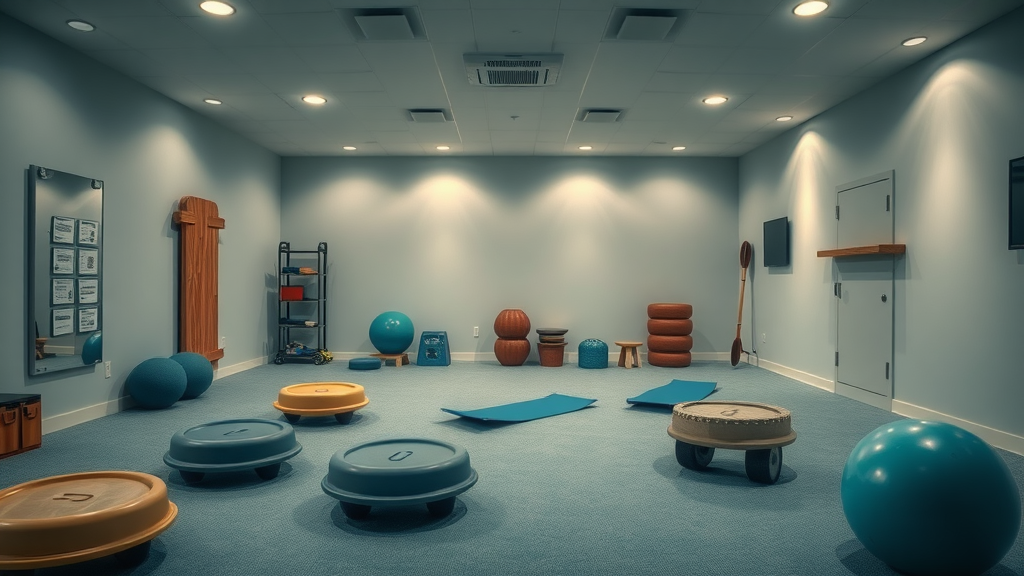
The environment is as important as the exercises themselves when aiming for comfort and success. A well-designed sensory-friendly workout space features soft lighting , noise control, organized equipment, and soothing colors. Adaptive tools like balance boards, weighted equipment, and textured mats create a space where everyone feels encouraged to move.
Accommodating various sensory processing challenges means allowing for flexibility in layout and tool selection. Open areas for movement, secluded spaces for calming breaks, and highlighted sensory corners (with bins or tactile objects) ensure no participant feels left out or overwhelmed.
Lighting, Equipment, and Noise Control Tips
Maintain soft, adjustable lighting to prevent overstimulation and offer a calming atmosphere. Use equipment with varied textures and weights to accommodate different sensory needs. Noise control strategies—including sound panels, low-volume music, and quiet zones—are essential for participants who may be sensitive to unpredictable sounds.
Choose adaptive gear that is both functional and approachable, allowing every participant to explore at their own comfort level. Thoughtful arrangement of equipment promotes body awareness and safety, ensuring seamless flow and minimizing anxiety.
Selecting the Right Sensory Bin Materials for Sensory Engagement
For sensory bins , select objects with diverse textures, weights, and shapes: squishy balls, smooth pebbles, soft fabrics, and stretchy bands. These items deliver targeted sensory input, offering a playful, low-pressure way to build focus and fine motor skills .
Rotating these materials keeps engagement high and supports a wide range of sensory needs, from tactile seekers to those who crave a calming, predictable sensory experience. Instructors and caregivers can tailor contents to match individual comfort and therapeutic goals.
Organizing Spaces for Movement, Deep Pressure, and Comfort
Professional sensory gyms and adapted home spaces often divide zones for movement , deep pressure , and rest. Ensure clear, open paths for gross motor activities—like obstacle courses or balance boards—while designating corners with soft mats or beanbags for breaks. This combination supports both active participation and timely self-regulation.
Consider visual and tactile cues (like color-coded zones or tactile floor strips) to help participants know where specific activities happen. This not only improves safety but also enhances body awareness and coordination .
| Fitness Aspect | Sensory-Friendly Workouts | Traditional Workouts |
|---|---|---|
| Lighting | Soft, adjustable | Fixed, bright |
| Noise | Low, controlled | Loud, variable |
| Equipment | Textured, weighted | Standard, generic |
| Activities | Deep pressure, adaptive, sensory bins | Aerobics, running, weights |
Customizing Sensory-Friendly Workouts for Children with Autism
Tailoring sensory-friendly workouts for children with autism ensures each child’s preferences and needs are addressed. This personalized approach can transform fitness from a stressful challenge into a source of pride, enjoyment, and new skills.
Begin by observing sensory needs—does your child seek movement or avoid certain textures? Use this information to adapt routines, ensuring exercises promote regulation, creativity, and steady progress towards new motor skill milestones.
Adapting Deep Pressure Activities for Different Sensory Needs
Every child has a unique response to deep pressure activities. Some may find comfort in weighted blankets during cooldowns, while others prefer rhythmic compressions through weighted vests or ball rolls. Experiment with these modalities, noting relaxation signs or increased participation as cues that your adaptation is successful.
Use feedback from children, parents, and occupational therapists to fine-tune approaches—all in pursuit of maximizing comfort and engagement in every session.
Promoting Social Interaction through Team-Based Sensory Exercise
Social connection is a crucial outcome of sensory-friendly fitness . Structured group exercises—like paired yoga poses, team-based obstacle races, or collaborative ball routines—encourage communication, turn-taking, and positive reinforcement. These interactions improve not only motor skills but also social skills, preparing children for greater participation out in the community.
"When we adapt fitness environments to address sensory challenges, participation and enjoyment soar—especially among children with autism and ADHD." – Occupational Therapist
Blending fun with supportive guidance, social-based activities help break down barriers for children who might otherwise avoid group play due to sensory processing concerns.
Integrating Balance and Coordination Challenges in Sensory-Friendly Routines
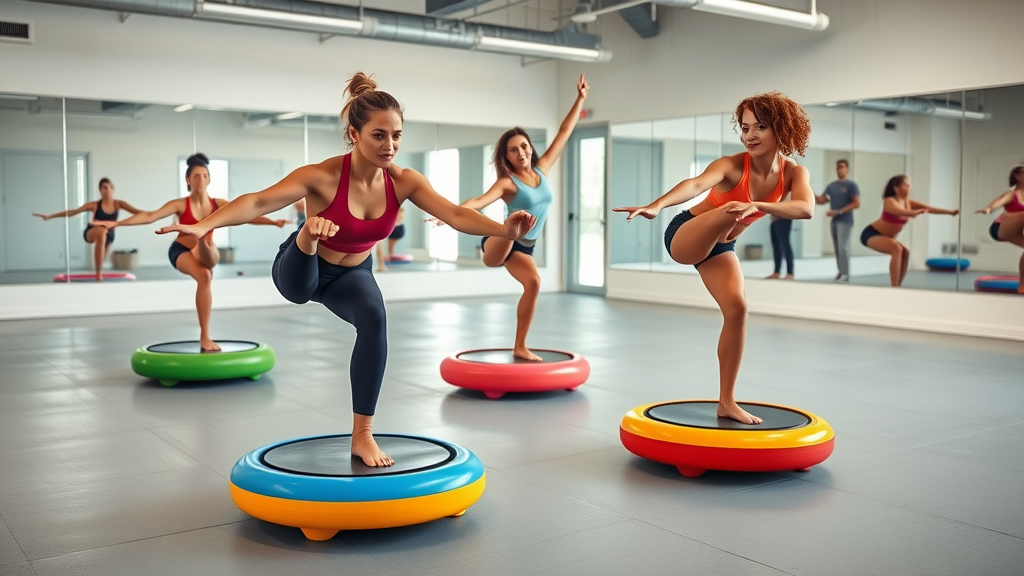
Integrating balance and coordination challenges into sensory-friendly workouts is essential for promoting full-body stability and self-control. Activities like balancing on foam pads, stepping through agility ladders, or navigating adaptive obstacle courses are engaging ways to improve motor planning and body awareness.
Using visually and tactilely engaging props, these drills can be adapted for all ages and abilities, encouraging incremental progress and successful participation even for those with significant sensory processing difficulties.
Balance Pads and Coordination Drills for Enhanced Motor Skills
Balance pads create unpredictability, forcing the body to adapt and strengthening stabilizing muscles—key for motor skill development and protection against falls. Coordination drills, such as tossing weighted balls between hands or skipping over colored tiles, combine movement, sensory input, and focus for a comprehensive skill-building experience.
These activities are not only beneficial for those with autism spectrum disorders or sensory challenges, but also for anyone hoping to improve their posture, athletic performance, or day-to-day mobility.
Tracking Progress: Motor Skills, Coordination, and Body Awareness
Consistent measurement and encouragement are vital for lasting motivation. Charts, stickers, and digital progress logs can help children and adults track achievements in motor skills , balance, and body awareness . For those with sensory integration difficulties, recognizing these gains—however small—builds confidence, resilience, and a sense of accomplishment.
Tips for Making Sensory-Friendly Workouts a Habit for All Ages
- Set predictable routines with sensory breaks
- Use adaptive equipment for varying sensory needs
- Encourage choice and autonomy in workout selection
- Monitor comfort levels and adjust activities as needed
Building regular sensory-friendly workouts into the week creates continuity and positive anticipation, especially for individuals who thrive on routine. Offering choices—such as selecting between a yoga mat, balance board, or resistance band—empowers participants and accommodates fluctuating sensory preferences. Always monitor reactions, and tweak routines when signs of discomfort or overload emerge, ensuring each session remains a joyful and beneficial experience.
Real-World Examples of Sensory-Friendly Workout Programs Enhancing Sensory Integration
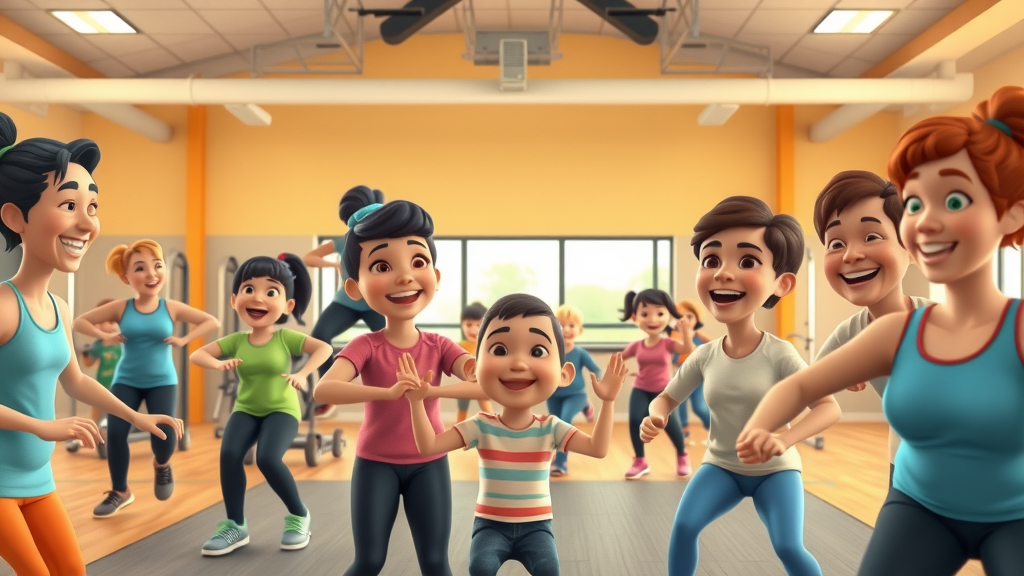
Community centers, therapy clinics, and inclusive gyms nationwide are pioneering sensory-friendly workout programs with extraordinary results. Structured environments and specialized staff encourage participants to build motor skills , body awareness , and self-esteem—all while making fitness genuinely fun.
These success stories highlight how adaptive fitness environments boost not just skill development, but also confidence, social participation, and lifelong motivation to stay active.
Case Studies: Children with Autism Achieving Motor Skill Milestones
From preschoolers mastering a new balance beam to teenagers transitioning into group yoga classes, children with autism demonstrate significant gains in motor skills and sensory integration when given consistent, individually-tailored opportunities. Milestones like jumping with confidence, holding a yoga pose, or participating in group relay races open doors to new social, academic, and athletic opportunities.
Parents often report improvements not only in physical abilities, but also in attention span, sleep patterns, and willingness to participate in family outings.
Community Centers and Gyms Offering Sensory-Friendly Classes
Today, gyms and recreation programs actively embrace the value of sensory-friendly fitness . These spaces feature dedicated class times, adaptive instructors, and ongoing collaboration with occupational therapists. By welcoming children with autism, adults with processing challenges , and others who benefit from a calm, organized approach, these centers create a culture of acceptance and excellence.
Ongoing feedback and participant involvement help shape programming, ensuring that each session grows to better serve evolving needs and interests.
Addressing Common Barriers to Sensory Integration in Fitness Settings
Despite the growth of sensory-friendly workouts , obstacles remain. Loud, chaotic gyms and non-adaptive routines can still make it hard for individuals with sensory sensitivities to join in. Addressing these barriers requires a commitment from instructors, facilities, and families to ongoing education, environment modification, and open communication.
Incorporating feedback and adjusting activities or spaces as needed makes a transformative difference in comfort and participation.
Overcoming Sensory Processing Obstacles
Work to understand each individual’s sensory triggers and preferences. This could mean modifying lighting, silencing extraneous noise, changing the order of activities, or offering portable sensory bins for on-the-spot calming. Collaborate closely with occupational therapists and families for insights, and don’t be afraid to innovate. The best programs are those that adapt continually in response to participant needs.
Success is built through patience, compassion, and a willingness to make changes—ultimately ensuring everyone feels safe and valued in exercise spaces.
Supporting Families and Caregivers to Encourage Participation
Families play a crucial role in supporting the success of sensory-friendly workouts . Encourage routine participation by educating caregivers on the benefits of adaptive fitness, demonstrating at-home modifications, and celebrating each achievement. The more supported families feel, the more likely their loved ones are to remain engaged and continue progressing.
Evidence-Based Benefits: How Sensory-Friendly Workouts Improve Sensory Processing and Wellbeing
Mounting studies confirm that sensory-friendly workouts provide clinical and practical benefits for people with sensory processing differences. These programs are linked to improvements in self-regulation, mood, motor skills , and participation in daily life. The positive effects of addressing body awareness , deep pressure, and consistent, adaptive movement carry into better sleep, focus, and family relationships.
For children with autism , the rewards are especially profound—fueling more confident, active participation at home, school, and in the community.
Research on Sensory Integration and Physical Activity
Leading organizations in occupational therapy and developmental medicine note that combining physical activity with sensory integration strategies yields the strongest improvements in motor skill acquisition and behavioral regulation. Sensory-friendly programs not only improve performance during exercise, but also support broader academic and social skills.
Engaging the senses during workouts leads to better concentration, more adaptive behaviors, and a deeper enjoyment of physical activity for individuals with autism spectrum disorders and related challenges.
Long-Term Outcomes for Individuals with Autism and Sensory Needs
Longitudinal studies reveal that lifelong engagement in sensory-friendly workouts has positive effects on independence, relationships, and overall quality of life. Regular practice helps participants maintain progress in body awareness , fine and gross motor skills , and emotional wellbeing—reducing anxiety and fostering greater resilience.
Ultimately, these benefits empower not just individuals with sensory processing differences, but their families and communities as well.
People Also Ask: Sensory-Friendly Workouts
How to exercise with sensory issues?
Practical solutions include choosing low-stimulation environments (with calming lighting and minimal noise), using weighted or textured equipment, and following adaptive routines that emphasize deep pressure and body awareness . Opt for exercises that provide positive sensory input, such as yoga, resistance bands, or obstacle courses. Always monitor your comfort, and don't hesitate to modify activities as needed.
What exercise is best for autism?
Sensory-friendly options like swimming, yoga, trampoline jumping, and carefully designed obstacle courses offer excellent opportunities for children with autism and those with sensory processing differences . These exercises promote motor skill development, body control, and sensory regulation—creating a foundation for lifelong activity and inclusion.
What is the best sport for sensory issues?
Swimming, therapeutic horseback riding, and gymnastics are among the best sports for individuals with sensory integration needs. These activities support overall coordination, balance, and motor skill development while offering opportunities for calming sensory input and community engagement.
What are sensory activities for adults with ADHD?
Yoga, tai chi, resistance training, and mindful movement routines are ideal for adults with ADHD. These activities provide structure, support sensory processing , and help improve focus and emotional regulation, leading to lasting health and wellness benefits.
Frequently Asked Questions about Sensory-Friendly Workouts and Sensory Integration
Are sensory-friendly workouts suitable for all ages and fitness levels?
Yes, sensory-friendly workouts are fully adaptable, making them appropriate for toddlers, teens, adults, and seniors—regardless of fitness level or experience. Routines can be customized for intensity, speed, and complexity to meet each participant's comfort and needs.
What equipment is recommended for sensory-friendly exercise environments?
Weighted balls, resistance bands, balance boards, textured mats, and sensory bins are highly effective. Offer a blend of soft fabrics, squeezable toys, and adaptive props for diverse sensory experiences and improved engagement.
How often should sensory-friendly workouts be incorporated into weekly routines?
Most families and therapists recommend practicing sensory-friendly fitness three to five times per week, integrating short sessions (20–40 minutes) into existing schedules. Consistency builds comfort and delivers the best long-term outcomes.
How do sensory-friendly workouts help with body awareness and emotional regulation?
They provide structured, calming movement that develops body awareness , fine and gross motor skills , and self-confidence. Adaptive routines play a key role in managing anxiety, improving emotional stability, and encouraging social participation through consistent, supportive experiences.
Key Principles for Lasting Sensory Integration via Sensory-Friendly Workouts
- Prioritize individual sensory needs
- Employ deep pressure and body awareness strategies
- Adapt environments to support comfort
- Celebrate progress in motor skill and coordination
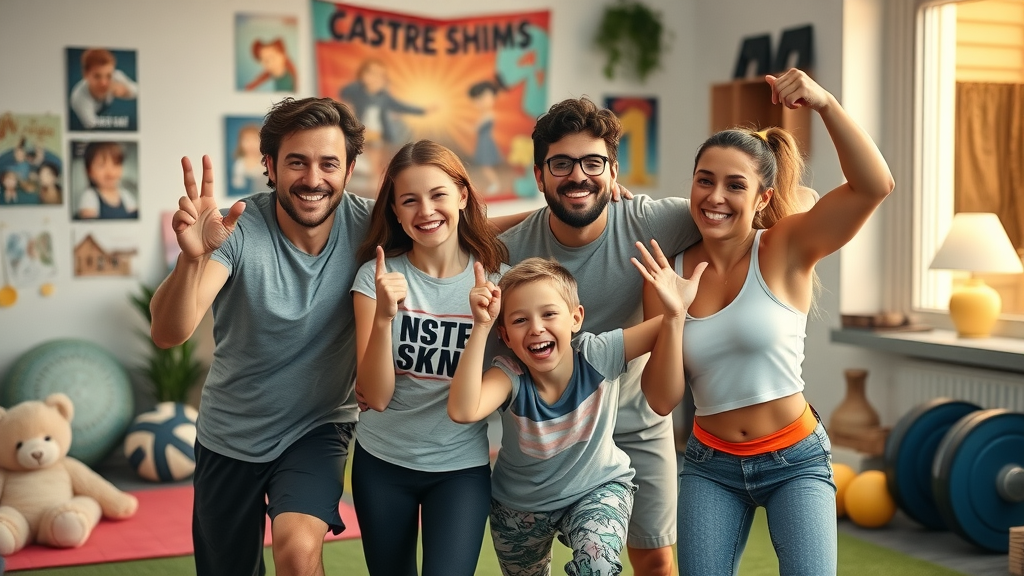
Lasting success is built on personalization , celebration of milestones , and unwavering dedication to comfort and growth. Embrace feedback, keep routines flexible, and always highlight individual victories—no matter how small. This approach fosters both physical health and deep, meaningful inclusion.
Final Thoughts: Embracing Comfort and Inclusion through Sensory-Friendly Fitness
"When comfort comes first, fitness becomes more accessible—unlocking health, happiness, and growth for all, especially for those with sensory processing differences."
Let’s transform fitness culture—one adaptive, sensory-friendly workout at a time—to ensure wellness, participation, and joy for every body.
Discover How Sensory-Friendly Workouts Can Transform Your Fitness Journey and Wellbeing Today
Are you ready to take the next step? Explore local classes, reach out to an occupational therapist, or start a sensory-friendly routine at home. Your journey to greater comfort, health, and inclusion begins now—experience the benefits of sensory-friendly workouts and unlock your fullest potential!
 Add Row
Add Row  Add
Add 



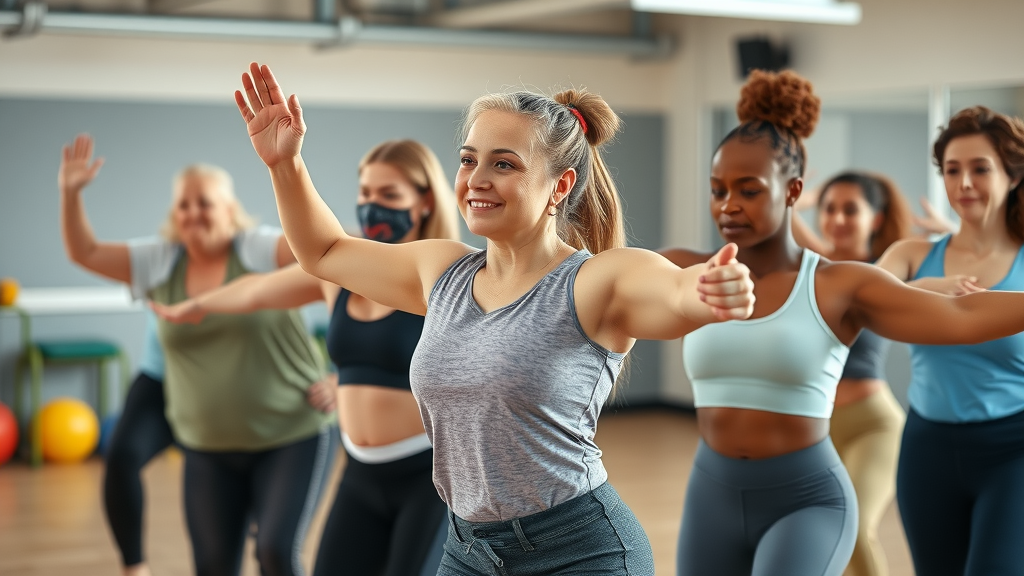
Write A Comment